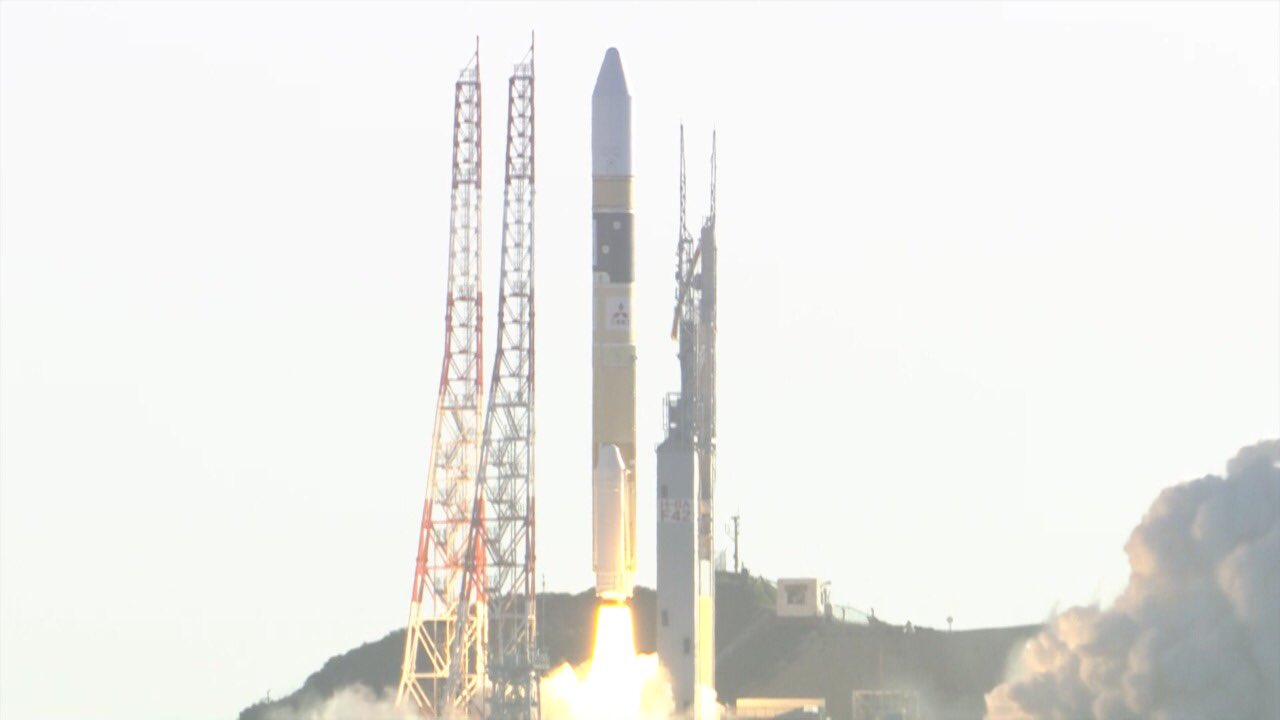
UAE makes history by launching its first mission to Mars

The United Arab Emirates made history by launching its first mission to Mars, with a blast off in Japan early on Monday. It is the Arab world’s first interplanetary mission.
The launch of the spacecraft named Amal, or Hope, marks the start of the seven-month journey to the red planet which will study the upper atmosphere and monitor climate change while circling Mars for at least two years.
It blasted off from the Tanegashima Space Center in Japan, aboard a Mitsubishi Heavy Industries H-IIA rocket, on time at 6:58 a.m. (2158 GMT Sunday) into the blue sky.
The launch which was initially planned for July 15, had been delayed for five days due to stormy weather.
The Hope spacecraft which is about the size of a small car, along with its launch, cost $200 million, according to Omran Sharaf, the UAE project manager. It carries three instruments to study the upper atmosphere and plans to send back images of weather changes.
The craft is expected to reach Mars in February 2021, the year the UAE celebrates 50 years since its formation.
The United Arab Emirates said its Amal space probe was functioning after launch as it headed toward Mars. The probe will now spend the next seven months traveling through deep space, periodically correcting its course with a series of engine burns. Sometime around February 2021 it will project itself into an elongated orbit around Mars where it will study the atmosphere and send back data.
Astronomer Fred Watson said that it was great to see everything going according to schedule. “It looks like things are all on track. Its a huge step in terms of space exploration to have a nation like the UAE taking that giant leap to send a spacecraft to Mars,” he said.
At Mohammed bin Rashid Space Center in Dubai, Emirati men in their traditional white kandora robes and women in their black abayas watched transfixed as the rocket lifted off.
As its stages separated, a cheer went out from a group of Emirati men seated on the floor. They began clapping, one using his face mask due to the coronavirus pandemic to wipe away a tear.
A newcomer in space development, the UAE has successfully put three Earth observation satellites into orbit. Two were developed by South Korea and launched by Russia, and a third its own was launched by Japan.
A successful Hope mission to Mars would be a major step for the oil-dependent economy seeking a future in space, coming less than a year after the launch of the first UAE astronaut, Hazzaa Ali Almansoori. He spent over a week at the International Space Station last fall.
The UAE has set a goal to build a human colony on Mars by 2117.
The spacecraft was assembled at Boulder and transported to Japan as the two countries looked to expand their ties with the rich and politically stable Middle Eastern nation. Resource-poor Japan has traditionally kept friendly ties with Middle Eastern countries. In recent years, Japan has increasingly stepped up trade and defense ties with the UAE, and now seeks to expand its space business.
The spacecraft is set to follow up on NASA’s Maven orbiter sent to Mars in 2014 to study how it went from a warm, wet world that may have harbored microbial life during its first billion years, to the cold, barren place of today.
India created history in 2014 when its Mars mission ‘Mangalyaan’ entered the orbit of Mars within the first attempt. It became the first country to do so. It was launched in 2013 and still continues to study the surface of the planet. The mission was hailed for being cheaper than the Hollywood film ‘Gravity’ and even cheaper than NASA’s Maven orbiter.
Two other Mars missions are planned in the coming days by the U.S. and China. The U.S. plans to send a rover named Perseverance to search for signs of ancient life and collect rock and soil samples for return to Earth, while China aims to explore Mars with an orbiter and rover to study the planets surface, and search for water and ice. Japan meanwhile, has its own Mars mission planned in 2024.
(With inputs from agencies)

